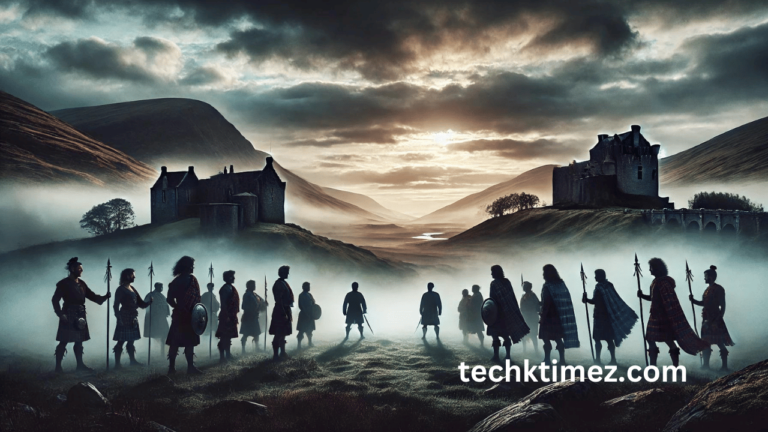Scotland’s rich history is woven with tales of feuds and loyalties, with the clan donathen clan robertson feud standing as a prominent thread in the fabric of Scottish heritage. This historical conflict, rooted in rivalry and territorial disputes, highlights the complex interplay of power, loyalty, and warfare in the Scottish Highlands.
The Origins of the Clan Donathen Clan Robertson Feud
The clan donathen clan robertson feud can be traced back to the medieval period, when Scottish clans vied for land and power. The Robertsons, known historically as Clan Donnachaidh, were deeply intertwined with the Scottish monarchy and pivotal historical events like the Wars of Scottish Independence. Their conflict with the Stewarts of Atholl, another formidable family, was marked by violent skirmishes and a bitter struggle for dominance over territories in the region.
The Role of Clan Donathen in Scottish History
The Robertson’s loyalty to the Scottish Crown, especially during the Wars of Scottish Independence, is a notable chapter in the clan donathen clan robertson feud. The Robertsons’ valor at the Battle of Bannockburn in 1314 under the leadership of their ancestor, Duncan, solidified their reputation as staunch defenders of Scottish independence. Their contributions to these wars significantly shaped the course of Scottish history.
Symbols and Legacy of Clan Robertson
One of the enduring symbols of Clan Robertson is the “Clach na Brataich,” or the Banner Stone. This sacred relic, unearthed during the preparations for the Battle of Bannockburn, has since been a symbol of the clan’s leadership and valor. The clan’s historical narrative is also marked by their crests and symbolic representations, which echo their ancient rights and royal connections.
READ ALSO: The Philosophical Depths of Clochant: Embracing Aesthetic Irregularities
The Intensity of the Clan Donathen Clan Robertson Feud
The clan donathen clan robertson feud escalated during the tumultuous periods of Scottish history, including the Jacobite uprisings. The Robertsons were fervent supporters of the Stuart cause, a stance that often put them at odds with neighboring clans and the government. The feud with the Stewarts of Atholl over lands and influence was particularly fierce, with numerous battles that shaped their mutual history.
The Clan Today: Preserving Heritage and Memory
Today, the descendants of Clan Robertson actively preserve their heritage through various cultural initiatives, including gatherings, educational programs, and participation in historical reenactments. The story of the clan donathen clan robertson feud continues to fascinate historians and enthusiasts alike, serving as a testament to the clan’s resilience and enduring legacy.
Economic Impact of the Feud
The clan donathen clan robertson feud also had a profound economic impact on the region. Frequent conflicts disrupted trade routes and agricultural activities, leading to economic instability in the region. The feud necessitated alliances and partnerships that were as much about economic survival as they were about military support. The clans often found themselves negotiating for peace simply to restore economic stability and ensure the wellbeing of their people.
Cultural Influence and the Arts
The rich cultural heritage of Clan Robertson, borne partly from the narratives surrounding the clan donathen clan robertson feud, has significantly influenced Scottish arts. Stories of the feud and its heroic figures have been immortalized in Scottish folklore, literature, and songs. These tales continue to inspire works of art that capture the imagination of audiences, celebrating the clan’s historic resilience and indomitable spirit.
The Clan’s Architectural Legacy
Amidst the turmoil of the clan donathen clan robertson feud, the Robertsons were responsible for constructing several iconic structures that stand to this day as monuments to their legacy. Castles and fortifications, built both for defense and as family seats, dot the landscape, serving as historical markers that tell the tale of a turbulent era. These structures are not only tourist attractions but also serve as venues for cultural events that celebrate Scottish heritage.
Conclusion
The clan donathen clan robertson feud offers a window into the turbulent and dynamic history of Scotland’s clans. From fierce battles to strategic alliances, this feud not only shaped the destinies of the clans involved but also played a crucial role in the broader Scottish historical context. As we reflect on these events, the echoes of the past continue to influence the cultural and historical landscape of Scotland.
Frequently Asked Questions About the Clan Donathen Clan Robertson Feud
- What was the main cause of the clan donathen clan robertson feud?
- The main cause was territorial disputes and power struggles over strategic lands in the Scottish Highlands, exacerbated by changing political dynamics.
- How did the clan donathen clan robertson feud impact Scottish history?
- The feud played a significant role in shaping Scotland’s political landscape, influencing allegiances and conflicts during critical periods like the Wars of Scottish Independence and the Jacobite uprisings.
- What is the “Clach na Brataich,” and why is it significant to Clan Robertson?
- The “Clach na Brataich” or Banner Stone is a sacred relic of Clan Robertson, symbolizing their role as leaders and warriors in historic battles.
- How does Clan Robertson preserve their history today?
- Clan Robertson preserves their history through cultural preservation, participating in historical events, and educating about their storied past.
- What lessons can be learned from the clan donathen clan robertson feud?
- The feud highlights the importance of understanding historical context, the consequences of conflict, and the value of preserving cultural heritage.


